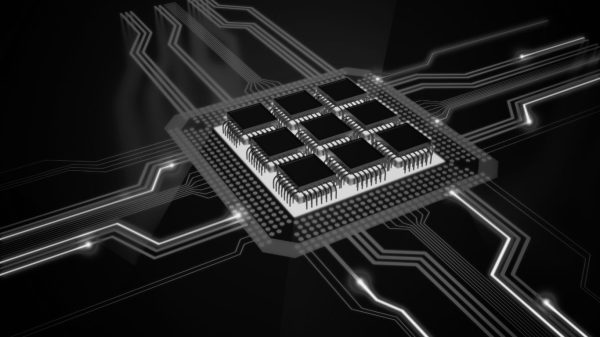As educational institutions increasingly rely on digital infrastructure to support learning, research, and administrative tasks, modern colleges must invest in secure, efficient, and scalable data centers. These educational data centers are not just repositories for information; they are the nerve centers of campus IT systems. By adopting best practices in data center management for colleges, institutions can build robust IT infrastructure that supports their evolving needs while ensuring reliability, performance, and security.
In today’s digital era, the shift from traditional paper-based systems to advanced digital platforms has transformed how colleges operate. With the rise of online learning, research collaborations, and cloud-based applications, educational institutions must ensure their data centers handle increased workloads, safeguard sensitive data, and support emerging technologies. Key factors driving the evolution of educational data centers include increased demand for online learning, big data analytics in research, cybersecurity concerns, and strict regulatory compliance. This guide outlines a step-by-step approach to building a future-ready data center tailored to the unique needs of modern colleges.
Get Our FREE Digital Transformation Checklist
Data Center Setup and Maintenance: Laying the Foundation
A well-planned data center starts with a clear understanding of current and future institutional needs. Begin with capacity planning by evaluating data storage and processing requirements based on peak usage, number of users, and application types. Choose a location that minimizes risks such as natural disasters while providing sufficient space for current equipment and future expansion. Design an effective layout that optimizes airflow, power distribution, and cable management; a modular design simplifies future upgrades. Additionally, ensure that the design meets regulatory standards and industry best practices for physical security and network protection.
When selecting equipment, prioritize robust, scalable, and energy-efficient hardware. High-performance servers with virtualization capabilities are essential for handling diverse workloads, while storage systems should offer redundancy and rapid data retrieval. Invest in high-speed networking components such as switches, routers, and firewalls, and consider software-defined networking for increased flexibility. Efficient cooling systems, redundant power supplies, and backup generators are critical for preventing overheating and ensuring continuous operation. Regular maintenance practices—such as routine inspections, firmware and software updates, and performance monitoring—help ensure long-term reliability and efficiency.
Scalability and Virtualization: Building for the Future
Modern colleges must design their data centers with scalability in mind to accommodate fluctuating demands and future technological advancements. Scalability allows the data center to grow alongside the institution, avoiding costly overhauls later on. Horizontal scaling—adding additional servers—and vertical scaling—upgrading existing hardware—are two primary methods. Modular data center designs enable incremental expansion and more predictable budgeting.
Virtualization is a key strategy in modern data center management for colleges. By abstracting physical hardware into virtual components, institutions can maximize resource utilization, reduce capital expenditure, and enhance operational flexibility. Virtual machines (VMs) allow workloads to be distributed across available servers, leading to cost savings and improved disaster recovery processes. Implementation involves choosing a robust hypervisor (such as VMware, Microsoft Hyper-V, or KVM), carefully planning the virtual architecture, and training IT staff on best practices. With proper monitoring and resource allocation, virtualization sets the stage for a resilient and agile IT infrastructure.
Backup and Disaster Recovery: Ensuring Business Continuity
Backup and disaster recovery (DR) strategies are essential for protecting data and maintaining continuity of operations. A robust backup strategy includes regular, automated data backups stored in geographically separate locations to safeguard against localized disasters. Off-site storage and cloud integration offer added flexibility and cost efficiency through scalable, pay-as-you-go models. Additionally, frequent testing and validation of backup data ensure that recovery procedures work as expected.
Disaster recovery planning involves conducting a comprehensive risk assessment, establishing clear recovery time objectives (RTO) and recovery point objectives (RPO), and deploying redundant systems such as hot or cold standby servers. A detailed DR plan outlining roles, responsibilities, and step-by-step restoration procedures is critical. By integrating cloud-based solutions and maintaining a proactive approach to risk, colleges can minimize downtime during emergencies and ensure rapid recovery of critical services.
Energy Efficiency: Balancing Performance with Sustainability
Energy efficiency is a vital aspect of modern data center management. Data centers consume significant energy, and implementing sustainable practices can reduce operational expenses and environmental impact. Benefits of energy efficiency include lower utility bills, enhanced system reliability through improved cooling and power distribution, and compliance with environmental regulations.
Optimizing cooling systems—by arranging server racks in hot and cold aisles, employing liquid cooling solutions, and installing environmental monitoring sensors—helps maintain ideal operating temperatures. Power management strategies include using energy-efficient power supplies, integrating renewable energy sources, and employing intelligent power distribution units (PDUs). Green IT initiatives, such as server consolidation through virtualization and regular energy audits, further contribute to a sustainable and cost-effective data center.
Integrating IT Infrastructure Best Practices: A Holistic Approach
Successful data center management for colleges requires collaboration across multiple departments. Interdepartmental meetings and cross-training programs ensure that IT, facilities, academic departments, and administration work together toward common goals. Shared key performance indicators (KPIs) help align IT objectives with broader institutional priorities.
Security remains a critical component at every level of data center management. A multi-layered security strategy that includes firewalls, intrusion detection systems (IDS), biometric access controls, and regular security audits is essential to protect sensitive data. Developing incident response plans and educating staff on cybersecurity best practices further strengthen the overall security posture.
Continuous improvement is the cornerstone of a future-ready data center. Regular reviews of performance metrics, energy efficiency, and security measures help identify opportunities for enhancement. Investing in research and development (R&D) to explore emerging technologies—such as artificial intelligence (AI) and machine learning (ML) for predictive maintenance—ensures that the data center remains adaptable in a rapidly evolving digital landscape.
Case Studies: Success Stories in Educational Data Center Optimization
University X faced challenges with an aging data center that struggled under the weight of increased online learning and research demands. By adopting a virtualization strategy and transitioning to a hybrid cloud model, the institution consolidated servers, reduced hardware costs, and improved resource allocation. This proactive approach established a framework for future expansion and innovation.
College Y, committed to sustainability, reconfigured its data center to enhance energy efficiency. By implementing a hot aisle/cold aisle configuration, upgrading to energy-efficient servers, and integrating renewable energy sources, College Y achieved a 30% reduction in energy costs while significantly lowering its carbon footprint.
Institute Z recognized the need for robust disaster recovery after a cyber incident exposed vulnerabilities. By automating backups, employing off-site storage, and implementing a detailed DR plan, the institute was able to restore critical services with minimal downtime. This case demonstrates how a comprehensive backup and DR strategy reinforces IT infrastructure best practices across educational institutions.
Get Our FREE Digital Transformation Checklist
The Road Ahead: Trends Shaping the Future of Educational Data Centers
Emerging trends indicate that educational data centers will continue evolving to meet new technological challenges. Cloud-native technologies, including containerization and microservices architectures, are becoming increasingly important for rapid application deployment and resource management. AI and automation will further revolutionize data center operations by enabling predictive maintenance and automated workflows that reduce human error. Additionally, sustainability will remain a core metric, with advanced energy management systems leveraging IoT devices and real-time analytics to optimize power consumption.
Practical Steps for Colleges to Optimize Their Data Centers
To summarize, here are actionable steps for modern colleges to optimize their data centers: First, conduct a comprehensive assessment of current IT infrastructure and future needs; then develop a strategic plan with short-term and long-term objectives. Implement best practices in setup and maintenance by designing a modular, scalable data center with redundant systems, updating hardware and security protocols regularly, and adopting virtualization and cloud integration. Enhance backup and disaster recovery processes through frequent, automated backups, off-site storage, and detailed DR plans. Finally, focus on energy efficiency by optimizing cooling systems, managing power consumption effectively, and pursuing green IT initiatives. Continuous monitoring, interdepartmental collaboration, and a culture of innovation will ensure that the data center remains resilient, secure, and adaptable.
Conclusion
Optimizing data centers for modern colleges is a multifaceted challenge that demands careful planning, strategic technology choices, and a commitment to continuous improvement. By concentrating on robust setup and maintenance, embracing scalability and virtualization, establishing comprehensive backup and disaster recovery protocols, and integrating energy-efficient practices, educational institutions can build IT infrastructure that not only meets current demands but also anticipates future growth. With the right foundation, modern colleges can transform their data centers into strategic assets that drive academic excellence and operational innovation.
Net Covet remains dedicated to supporting educational institutions through innovative IT consulting and security solutions. Whether you are planning a new data center or revamping an existing facility, our expertise can help you navigate the complexities of modern IT infrastructure. Connect with us today to learn how our tailored solutions can empower your college to achieve a secure, efficient, and future-ready data center.










